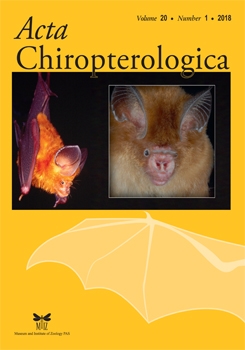Wagner's mustached bat (Pteronotus personatus) is an insectivorous bat distributed throughout America from Mexico to Brazil, which inhabits a range of habitats from rain forests to dry deciduous forests. There are two currently recognized species within the P. personatus complex, for which we examined 235 cytochrome oxidase I (COI) sequences and 138 cytochrome b (Cytb) sequences in order to explore its genetic variation in Mexico as well as in Central and South America. Our results reveal considerable differences in the genetic structure inside this species complex, indicating five genetic lineages: 1) Gulf of Mexico and the Mexican Pacific coastal plain to the Isthmus of Tehuantepec, 2) Southeastern Mexico, 3) Guatemala, 4) Guyana and Suriname-COI/Guyana and Venezuela-Cytb, and 5) Guyana, Suriname, French Guiana and Brazil. In addition, we used the isolation-with-migration coalescent method to estimate divergence times. The results indicate that vicariant events occurred roughly 1,624,000–2,450,000 years ago during the Early Pleistocene, wherein Central America was the center of two separate diversification processes, one toward Mexico and the other South America. The intraspecific lineages obtained for P. personatus demonstrate the need to reevaluate the species complex limits of this taxon.
How to translate text using browser tools
1 June 2018
Intraspecific Evolutionary Relationships and Diversification Patterns of the Wagner's Mustached Bat, Pteronotus personatus (Chiroptera: Mormoopidae)
Dafne G. Zárate-Martínez,
Ricardo López-Wilchis,
José D. Ruiz-Ortíz,
Irene D. L. A. Barriga-Sosa,
Alejandra Serrato Díaz,
Carlos Ibáñez,
Javier Juste,
Luis M. Guevara-Chumacero
ACCESS THE FULL ARTICLE

Acta Chiropterologica
Vol. 20 • No. 1
June 2018
Vol. 20 • No. 1
June 2018
cytochrome b
cytochrome oxidase I
isolation with migration
mitochondrial lineage
Mormoopidae




